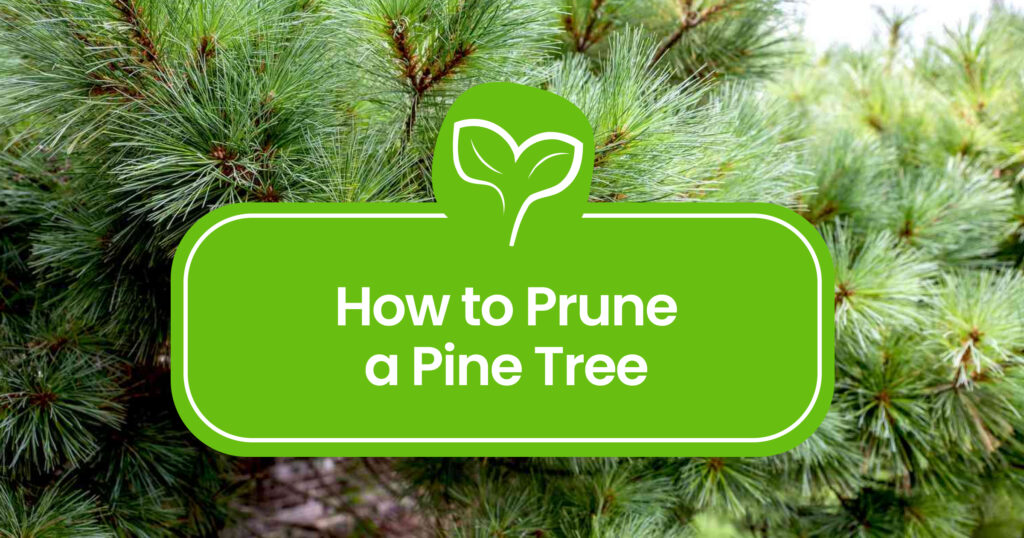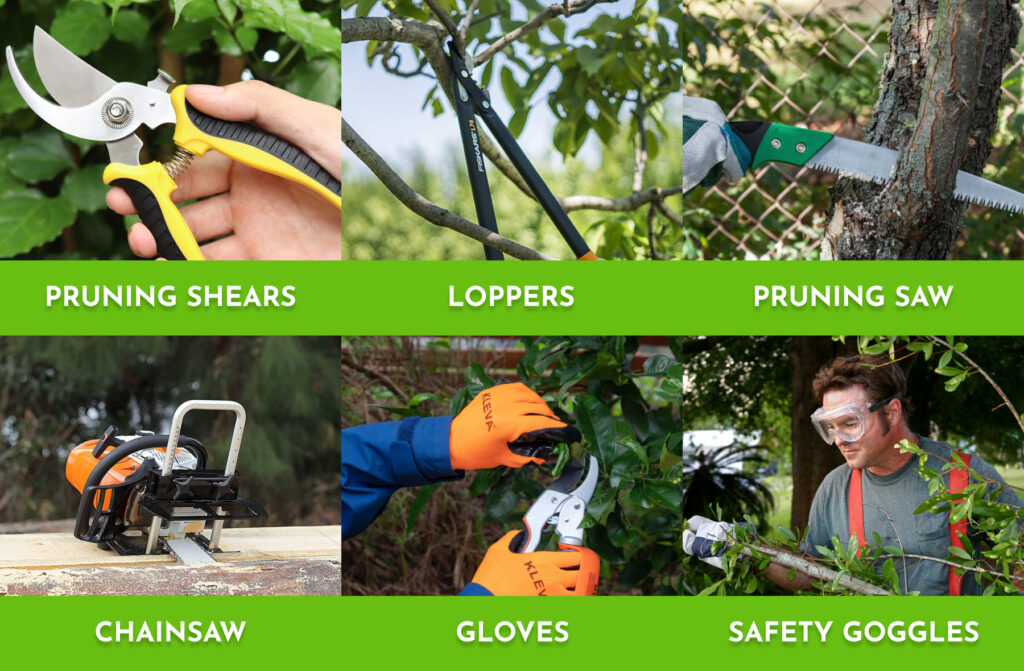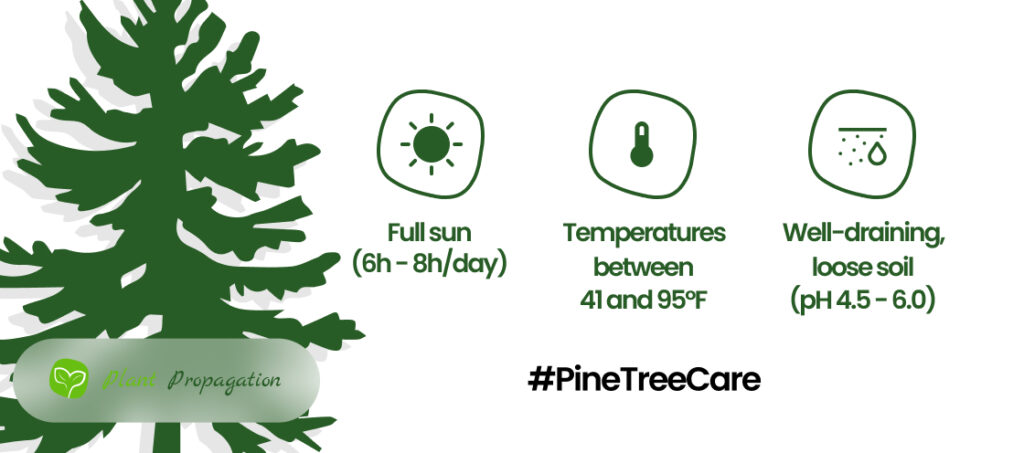
Pruning pine trees isn’t a vanity project—they’re already stunning! But why do it? Let’s uncover the reasons behind this green grooming. It’s about more than mere aesthetics—tidying up those weak branches, shaping for balance, and ensuring a sturdy stance. Plus, think of it as an insurance policy against tree disasters—no accidental branch breakdances here! We’ll walk you through the essentials of timing, tools, and the delicate art of pruning, ensuring your pine thrives and flourishes.
Why should you Prune Pine Trees
Pruning pine trees isn’t just about looks—these natural beauties don’t need much touch-up for aesthetics. But why prune them? There are four big reasons!
- First off, it’s about tidying up—snipping off dead or sickly branches and those crisscrossing troublemakers.
- Then, it helps to keep it evenly balanced and avoid messy overgrowth.
- It is also about strong structure —making sure it stands strong and doesn’t grow too wild.
- Lastly, think of it as preventing a tree disaster—trimming those super long limbs to avoid any accidents caused by breaking branches.
When to Prune a Pine Tree
Timing is everything! The best time to prune your pine trees is late winter or early spring. This way your tree will have plenty of time to cover up those cuts with fresh growth.
If you ever need to prune away damaged branches during summertime, you can do that, but never make it a habit. Keep in mind that pruning during the warmer season also means that pests such as the pine bark beetle are a real treat.
The Tools You’ll Need
When selecting the right tools for pine pruning, efficiency and safety are equally important. You are going to need these:
- Pruning shears: perfect for smaller branches
- Loppers: for a bit thicker branches, you need these
- Pruning saws: to make precise cuts on thicker branches
- Chainsaw: These are for the largest and thickest branches on the pine tree. Handle with care!
- Protective Gloves: Anytime you are going to prune a tree, puncture-resistant gloves are a must.
- Safety Goggles: You’ll never know when a flying chip can hurt your eyes, so safety goggles are also important.
Depending on how tall your pine tree is and where the selected branches are, you might also need a ladder. To avoid any infections, you should also always clean your tools before using them.

Pruning Pine Trees Step-by-Step
- Remove damaged branches: If you see any branches that are damaged (heavy storms can easily do that to your pine), you want to remove them at the collar (where the branch joins the trunk). Usually, a lopper should do the trick, but for thicker ones, you might want to take out the chainsaw.
- Make Precision Cuts: When trimming a branch, slice it right back to the collar, that thicker area near the trunk. For chunky branches over an inch thick, avoid making one full cut from top to bottom. Instead, start a foot out and notch halfway through from the bottom. Then, a couple of inches further out, complete the cut from top to bottom. Trim off the stub flush with the collar for a clean finish.
- Look for rubbing branches: Check for any branches getting too close to each other. If they’re rubbing against each other, it’s time for one to go. If you leave them, they create openings for bugs and infections.
- Candling: To make your pine’s appearance fuller, you can pinch back the fresh growth on the tips. You want to use your hands for this because using shears can cut the needles making them brown.
Aftercare
Pruning your Pine Tree can put some extra pressure on it, thus keeping the right maintenance schedule is especially important. The two most important aspects are watering and mulching.
Watering: To ensure healthy growth, moderate your pine tree’s watering schedule, especially in its early years and during dry spells (weekly watering). Too much water can stunt growth, so avoid waterlogged areas.
Mulching: Mulch plays a superhero role—reducing evaporation, curbing weeds, and offering nutrients as it decomposes. When planting young pines, use mulch to shield the lower branches from your mower. Extend this protective layer as the tree grows to prevent accidental damage and keep your pine thriving.

Conclusion
As you wrap up your pine tree pruning adventure, remember these top tips for a thriving, well-groomed pine:
- Timing is Crucial: Prune in late winter or early spring for optimal healing and growth recovery.
- Tools of the Trade: Choose the right tools for the job—shears, loppers, and protective gear ensure precision and safety.
- Precision in Cuts: Make clean cuts at the collar to encourage healthy growth and prevent disease.
- Aftercare is Key: Maintain a balanced watering schedule and strategic mulching to nurture your pine’s vitality.
With these essential pointers, you’re not just pruning; you’re fostering the health and resilience of your pine tree. Embrace these practices, and watch your pine flourish into a majestic centerpiece of your landscape.
Frequently Asked Questions
When is the best time to prune pine trees?
The best time to prune your pine trees is late winter or early spring. This way your tree will have plenty of time to cover up those cuts with fresh growth.
Can you prune pine trees in the summer?
When it comes to pruning, you always want to give your Pine Tree enough time to heal its wounds before winter, thus you want to avoid pruning in the summer. Of course, if you absolutely have to prune damaged branches, you can do that, but do not make it a habit.
Can you top a pine tree?
Evergreen trees – such as pine trees – become highly prone to infections and decay if you prune their upper main stem. You should never top a pine tree.
Can I prune pine trees in winter?
Pine trees and the pine bark beetle are both dormant during late winter. Pruning in this period ensures quick healing before the beetle becomes active, making the tree less susceptible to attacks.
Can pruning damage my pine tree?
There are three main ways pruning can damage your Pine tree:
- Pruning at the wrong time: Pruning during summer will not grant enough time for your tree to heal its wounds until winter, and makes it susceptible to pests such as the bark pine beetle.
- Overpruning: Removing too many healthy branches can damage & eventually kill your pine tree. Never prune more than 25% of your tree in a single season!
- Pruning the top of your Pine tree: Pine trees become prone to infections and decay if you prune their upper main stem for height control.

